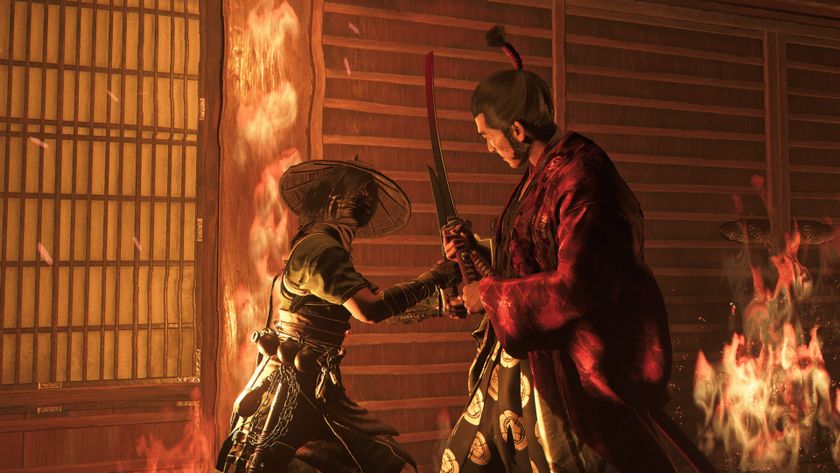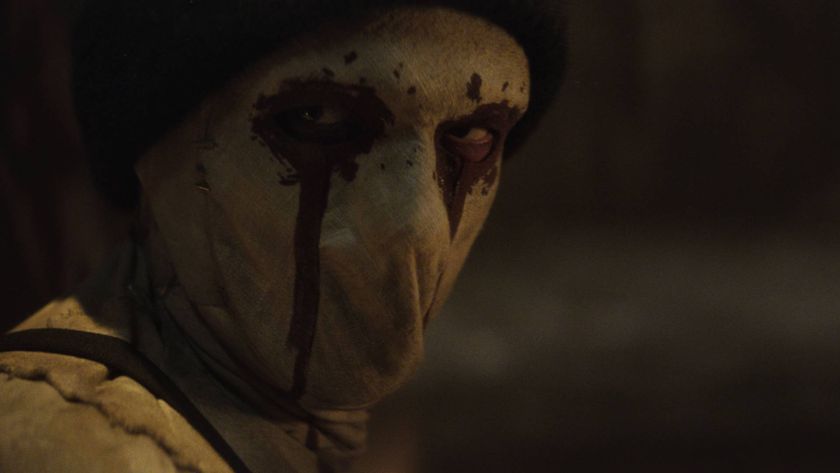Injustice 2: Mixing Destiny with Mortal Kombat to create a fighting game RPG that really shouldn’t work (but does)
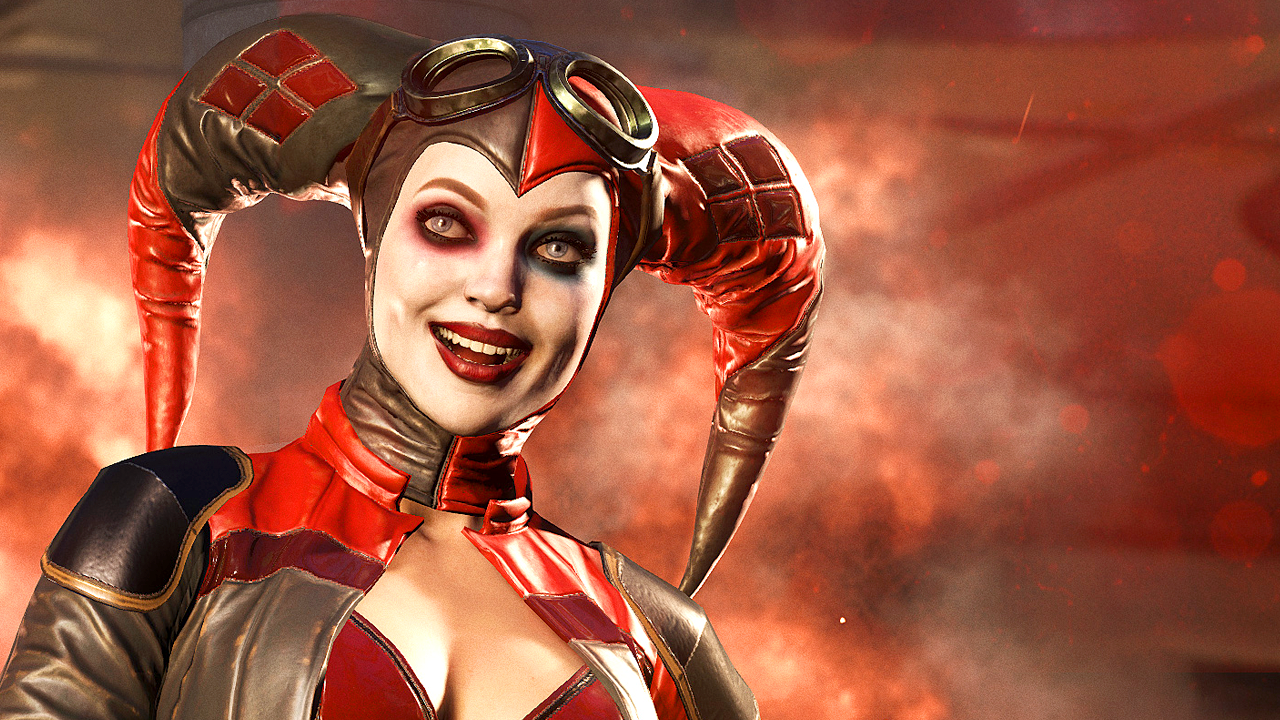
If you believe the obvious, knee-jerk reaction, Injustice 2 is a game that doesn’t seem to understand its own genre. It’s a flailing novelty taking a pick-axe to everything that makes the fighting game work. After all, no game style demands resolute, unswerving balance like the competitive fighter. A level playing field is the only acceptable arena. With great power must come great responsibility, or at the very least, a set of nerfs patched in later down the line. But Injustice 2 has a loot system. And customisable characters. And a whole bunch of different, modifiable stats, for attack, defence, health, and abilities. And equipppable weapon variants that bring a whole extra set of in-fight perks. Want to give Superman a temporary shield when he takes a big hit? Yep, that’s feasible.
But in truth, NetherRealm’s DC superhero sequel feels anything but broken. In fact, rather than a game out of touch with its genre, Injustice 2 feels like a game that really understands some very particular needs and evolving challenges that few of its competitors have addressed of late. While those early balance fears currently look unfounded, as understandable as they were – and I’ll come on to that in a bit - the really exciting thing going on here is the way that Injustice 2 tackles fighting games’ move away from the arcade and into long-term, home-based play. Because it does so with a freedom and ambition that – like the recent Mortal Kombat games’ campaign story modes – leaves the competition standing.
Injustice 2’s forward steps certainly don’t come from a place of isolated innovation, mind. As I’m taken through an in-depth presentation of the loot system, before going hands-on with the story and vs. multiplayer, a potential source of inspiration becomes very clear. Injustice 2 is Destiny: The Fighting Game (Blood-Soaked Swamp Thing Edition). But that in mind, everything quickly starts to make a great deal of sense. Bungie’s MMOFPS has of course maintained steadfast popularity since launch by eschewing the limited, traditional scope of campaign replays and multiplayer map DLC in favour of an over-arching meta-career made of personal character progression and empowerment. Injustice 2, by the same note, is a damn solid – and consistently fun – fighting game that adds an umbrella of long-term play and progress options separate and equal from the main game, but simultaneously part of it.
Every activity in the game will furnish random gear drops, while at the same time dishing out XP for your currently chosen character. No Injustice 2 character remains static. All of them will start evolving from the moment you pick them up, right through to the point that they hit the current level cap of 20. Level dictates base stats, while gear delivers customisation, and between the two, you’ve effectively got a Build-a-Bat Workshop of massive scope. Because while the traditional – and less obvious – fighting game archetypes are present and correct, from all-rounder Batman, to nimble, acrobatic Black Canary, to tricksy, technical, trap-setting Dr. Fate, the version of that archetype they’ll eventually become is all down to your gear choices and the creativity of your RPG theorycraft.
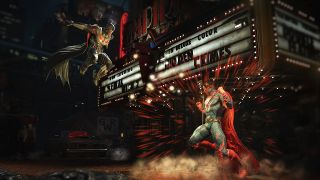
Want your Superman to be an all-out aggressor, for instance, focused on ending fights quickly with massive damage output? Then curate an armour set that buffs his attack power. Prefer a more safe-and-steady, attritional approach? You can just as easily turn your Kal-El into that massive-defence, massive-health asshole who wears their opponent down over lengthy, drawn-out matches. It’s a game that you half-learn, half-design on the fly. And so far, all the gear I’ve seen has been rather well-balanced in terms of advantages and drawbacks, meaning that overpowered god-builds feel unlikely, and creative stat-juggling should be quite the fun challenge. Injustice 2 might let you create your own fighter, but the tools it gives you to do so seem filled with self-righting mechanisms to ensure freedom of expression without danger of unfairness.
In that respect, the more I think about Injustice 2, the more it actually crystallises the fundamentals of the fighting game genre, rather than dissolving them as some feared. Long-term fighting game play is, after all, all about personal expression. It’s about finding a character who suits your play-style and then crafting and honing a way of playing them that’s uniquely your own. Injustice 2 respects that, and provides the facility to take that process to the next level by creating a truly personal relationship between character and player.
Fighting games, also, are always on the quest for accessibility. Each new one seems to scream that it will be the one to remove the genre’s intimidation barrier (unless it’s a BlazBlue; BlazBlue couldn’t give a shit), and almost every one fails to some degree. But Injustice 2 has a good shot, in that it doesn’t come at the problem from the usual perspective of simply making move execution easier, or simplifying commands – though, like the later Mortal Kombat games, it does a great job of streamlining both. Rather, it cuts immediately through to the really important stuff, by giving players the facility to get much closer to their character, much faster, learning their ins-and-outs, strengths and failings through direct, hands-on tinkering. In truth, the real barrier of entry in fighting games isn’t execution, it’s the understanding of many, interrelating systems and asymmetric character match-ups. Being able to really get under the hood of characters on a granular, but clearly explained level – with the compulsive fun of loot drops thrown in - should be a great way around that.
Sign up to the 12DOVE Newsletter
Weekly digests, tales from the communities you love, and more
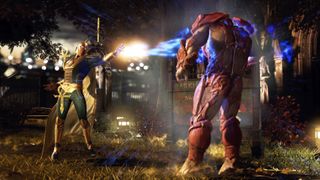
Of course, there’s always the safety net that the gear system allows less hardcore players to paper over their characters’ shortcomings, or, more likely, their own. No bad thing at all in terms of removing the fear-factor. But at the same time, the more serious, seasoned player might also find their own, specific needs well catered to. Because the other fundamental of any great, competitive game is the meta, the constant, trial-and-error, high-level investigation into which character match-ups, which weapons, which character builds, are most effective in which situations. Tier tables. Ability hierachies. Canonically strong team combinations. That sort of thing. Injustice 2’s gear system theoretically adds a whole new, potentially endlessly malleable layer to that, newly discovered versions of characters ensuring that things never crystallise, or rely as much on intermittent balance patches. And of course, there’s surely a much lesser chance of dedicated players suffering ‘main fatigue’ whereby over-familiarity with a primary fighter inevitably leads to ennui, or a sense of plateau, after prolonged play.
As for the all-important balance, NetherRealm isn’t taking any risks. In another familiar move from the Destiny playbook, it’s instigating a robust system for reconciling player disparities without sacrificing personalisation. When in Vs. play, character level advantages will be switched off, both fighters equalised to the same relative base-stats, leaving only armour tweaks in play. You’ll still be able to play your own version of your character, but you’re not going to run into a situation where your level-three Robin gets one-punch evaporated by a level-18 Supergirl.
As for other details? Freedom and agency seems at the forefront of character design, in that there’s no risk of being forced to equip certain gear in order to remain competitive. Wisely, there’s an Infusion-style system whereby favourite gear can be levelled up to current character standards, meaning that preferred build designs (and even looks) need not play second-fiddle to the quest for raw power. And on the subject of looks, shaders are in as a loot-type as well, so you’ll be able to apply a vast array of pre-set colour combinations to your fighters. And fear not, the most important question has already been asked and answered in the affirmative: The Adam West Batman colour scheme is in there somewhere.
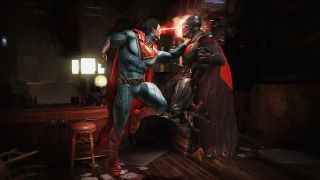
Actually, that’s not quite the most important point. The actual most important point? No microtransactions whatsoever in terms of levelling and powering up. The gear system will remain entirely in-game. There’s no pay-to-buff here. That’s great for the wallet, obviously, but it also bodes very well for the purity of NetherRealm’s ambition with Injustice 2, removing any suspicion that the gear system might be in place for any reason but pushing the genre forward.
It’s all still a grand experiment, mind, and an even grander gamble, the results of which we likely won’t know for sure until a good while after the game’s May release. But let’s not forget, the same was the case with a certain narratively-challenged shooter back in 2014, and despite suspicion and a few mis-steps along the way, that turned out just great, thank you very much.



